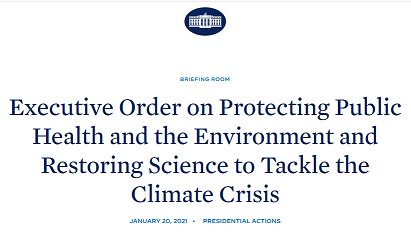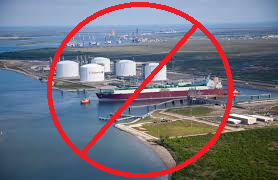
How Exxon Is Being Forced To Accept The Reality Of Bad Fossil Fuel Investments
March 3, 2021
The Even More Game-Changing Biden Order You’ve Never Heard About
March 9, 2021By Kristina Marusic, Environmental Health News, March 1, 2021
This is part 2 of our 4-part series, “Fractured,” an investigation of fracking chemicals in the air, water, and people of western Pennsylvania.
How many more families like these are there out there?
Download the full part 2 as a pdf
WASHINGTON COUNTY, Pa.—In the spring of 2019, after years worrying about exposures from a fracking well about a half mile from her grandkids’ school, Jane Worthington decided to move them to another school district.
Her granddaughter Lexy* had been sick on and off for years with mysterious symptoms, and Jane believed air pollution from the fracking well was to blame. She was embroiled in a legal battle aimed at stopping another well from being drilled near the school. She felt speaking out had turned the community against them.
“It seemed like practically everyone in the district had leased their mineral rights,” Jane told Environmental Health News (EHN). “We couldn’t get anywhere with the school board, and it seemed like they all had a reason to want us to just shut up and go away.”
The social strain combined with her granddaughter’s illness was enough to make her want to leave.
Money was tight for Jane, who is a single caregiver, but she found a deal on a foreclosure in another school district.
The house, white with sage green shutters, sat on a quiet residential street. It was a bit of a fixer-upper, but she didn’t mind the work—she just wanted a safe, comfortable home for her grandchildren, Lexy and Damien, who she’d raised since they were babies. At the time, Lexy was 15-years old and Damien was 13.
The kids fell in love with the house. There were still fracking wells nearby—they’re virtually impossible to avoid in Washington County—but there were none within a mile of the school, and they didn’t see any new wells being drilled close to the house.
Soon after moving in, though, they learned that their new home was within a mile and a half of a well pad with six wells already in production (meaning no longer being “fracked” or drilled, but producing natural gas and oil), and less than a half mile away from a large metal casting facility. An EHN analysis of the air and water at their new home, along with urine samples from the family, suggest they’re being exposed to higher-than-average levels of many of the chemicals they were concerned about at their old house.
“We don’t seem to be able to get away from this,” Jane said.
In 2019, EHN collected urine samples, along with air and water samples, from five families in southwestern Pennsylvania and had them analyzed for chemicals associated with fracking.
Read about how we conducted our study
Jane and her grandchildren were one of the five families we studied. We collected a total of nine urine samples from the family over a 5-week period and found 18 chemicals known to be commonly emitted from fracking sites in one or more samples, including benzene, toluene, naphthalene, and lesser-known compounds—all of which are linked to negative health impacts including respiratory and gastrointestinal problems, skin and eye irritation, organ damage, reproductive harm, and increased cancer risk.
Some chemical exposures aren’t detectable in urine if the body has already processed them, so we also looked for breakdown products, or biomarkers, for harmful chemicals. Some of these biomarkers show up when people consume certain foods or beverages, so to determine whether the levels we saw in Pennsylvania families were normal, we compared them against those seen in the average American using U.S. Centers for Disease Control and Prevention’s (CDC’s) National Health and Nutrition Examination Survey.
We found that urine samples for Jane and her grandkids contained biomarkers for fracking chemicals at levels higher than the U.S. 95th percentile—the value that 95 percent of Americans fall below, according to that CDC data.
All of the family’s samples exceeded the U.S. 95th percentile for mandelic acid, a biomarker for ethylbenzene and styrene. More than half of the family’s samples exceeded the U.S. 95th percentile for phenylglyoxylic acid, another biomarker for ethylbenzene and styrene, and for trans, trans-muconic acid, a biomarker for benzene. A third of the family’s samples exceeded the 95th percentile for hippuric acid, a biomarker for toluene.
Exposure to these compounds is linked to eye, skin, respiratory and gastrointestinal irritation; neurological, immune, kidney, cardiovascular, blood, and developmental disorders; hormone disruption; and increased cancer risk.
The family’s urine samples also suggested that they had higher-than-average exposures to biomarkers for toluene and xylenes, which are linked to skin and eye irritation, drowsiness and dizziness, and central nervous system damage.
There’s no way to know for certain whether the family’s exposures came from fracking emissions. We visited Jane’s home, had her complete an extensive survey about other possible sources of exposure, and recorded the family’s activities around the time of our sampling and did not find other obvious explanations, though the metal casting facility near Jane’s new home could also contribute to these exposures.
The exposures confirm Jane’s worst fears—that the children she’s tasked with protecting are exposed to harmful chemicals simply because of where they live. But the impacts run deeper. The family seemingly cannot escape the effects of an industry that wields tremendous power in the state and is allowed to operate within 500 feet of schools and homes housing children and other vulnerable residents. Researchers warn the impacts extend to the more out-of-sight aspects of health—people’s sleep, their social network, and their overall mental well being.
“I just wish there was more awareness that it really is dangerous for every family that lives here,” Jane said. “It isn’t as safe as we tend to want to make ourselves feel. This is proof.”
When she was in third grade, Lexy became very sick—she developed unusual rashes and had bouts of vomiting. She also developed asthma and started having severe nose bleeds.
After years of unknowns, Lexy’s doctor noticed abnormalities in her growth plates, which led him to believe that her symptoms could be the result of a toxic exposure. A toxicologist found that Lexy had been exposed to benzene, a volatile organic compound (VOC). Because neither her brother nor grandmother were sick—and, seemingly, no other kids at her school—her doctor said she likely had a higher than average sensitivity to benzene.
Benzene is found in tobacco smoke, wood smoke, vehicle exhaust, and industrial emissions. It’s also emitted into the air during both fracking and conventional oil and gas extraction, and is often found in fracking wastewater. Research has found that some workers at fracking sites are regularly exposed to high levels of benzene. Exposure is linked to cancer, organ damage with repeat exposure, fertility issues, skin and eye irritation, drowsiness and dizziness.
Despite having moved to a new neighborhood and a new school district, the levels of trans, trans-muconic acid—a biomarker for benzene—measured in all nine urine samples EHN collected from Jane Worthington and her grandchildren exceeded the U.S. median.
Two agencies have set recommended limits for trans, trans-muconic acid in urine for people with short-term workplace exposure to benzene to avoid health effects like increased cancer risk and neurological, developmental, and reproductive harm—the American Conference of Governmental Industrial Hygienists and its German equivalent, the DFG (Deutsche Forschungsgemeinschaft). The levels of trans, trans-muconic acid measured in five of the nine urine samples EHN collected from Jane Worthington and her grandchildren over a 5-week period exceeded both of those safety thresholds by up to 11-fold.
While Jane has frequently fretted over air emissions, she didn’t previously worry about their water. At both their old home and their new one they used the local municipal service provided by Pennsylvania American Water, and at both houses the family consumed unfiltered tap water.
“I’ve always assumed they’d take care of making sure it’s safe,” Jane said.
We found benzene in the water at all three locations we sampled at Jane’s house—the kitchen tap, the bathtub faucet, and the outdoor hose spigot. The highest level was in the outdoor hose spigot, which contained benzene at a level of 3.46 parts per billion. This was the highest level of benzene detected in the five households in our study.
Both the U.S. Environmental Protection Agency (EPA) and the Pennsylvania Department of Environmental Protection (DEP) have a maximum legal threshold of 5 parts per billion for benzene in drinking water, but the EPA has set a goal of no detectable benzene in drinking water because it can cause leukemia.
The levels of contaminants detected in different faucets at the same house can vary for a number of reasons, Chris Kassotis, an endocrine toxicologist and assistant professor at Wayne State University’s Institute of Environmental Health Sciences, who has researched water quality extensively, told EHN. He explained that after water enters the home, it sometimes sits in pipes or tanks where it can pick up additional contaminants, and it sometimes travels through filtration systems that remove contaminants.
“Either way,” Kassotis explained, “outside samples from a hose spigot are usually more reflective of what’s coming from the water authority or groundwater in your region.”
A spokesperson for Pennsylvania American Water who reviewed our findings told EHN in an emailed statement, “We follow a thorough sampling regimen as required by the Pennsylvania Department of Environmental Protection. Our monitoring continues to determine that levels of benzene are non-detectable.”
Lauren Fraley, a spokesperson for the DEP, told EHN that, while they do not require action if benzene levels are below the 5 parts per billion threshold, levels at or above 4 parts per billion would trigger quarterly monitoring and follow-up measures.
“I guess maybe this means we should start filtering our water since we know [Lexy] is so sensitive to benzene,” Jane said.
The family’s exposure to other compounds was higher than average, too. For example on August 5, 2019, a urine sample from Jane Worthington showed a level of phenylglyoxylic acid, a breakdown product of ethylbenzene and styrene, more than 17 times as high as that of the average cigarette smoker (Jane does not use any tobacco products).
On two of the three days when EHN collected urine samples from the family, they also wore personal air monitors for six to eight hours. Lexy’s monitor recorded the highest levels of decanal, pentadecane, heptanal, n-octanal, and n-nonane seen among the 39 air samples EHN collected last summer on August 6, 2019—a day when she stayed home and her only activities were going for a walk and taking a nap.
These chemicals can be found in household products, gasoline, and emissions from industrial and fracking facilities. Exposure to them is linked to a variety of negative health outcomes, including eye and skin irritation and respiratory problems.
Only a handful of these chemicals have regulatory limits, most of which pertain to short-term workplace exposures. Jane and her grandkids’ air samples exceeded one regulatory threshold for three chemicals—the recommended limits on benzene, ethylbenzene, and naphthalene exposure set by the California Office of Environmental Health Hazard Assessment to minimize cancer risk.
Since her first episodes in elementary school, Lexy has had similar symptoms—rashes, nose bleeds, joint pain and stiffness, vomiting, and migraines—on and off, which Jane said have coincided with the times when active drilling or flaring (the burning off of excess natural gas) was happening at well pads near their home or near Lexy’s school.
Both active drilling and flaring are associated with higher levels of air pollution and more reported health effects than wells in the production phase.
The DEP has conducted air monitoring studies near fracking wells, but critical data gaps persist.
“When monitoring is done, it’s often reported based on daily averages or weekly averages, or a short monitoring time that might be one day a week, and then that value is assigned to the whole week,” Alison Steele, executive director of the Southwest Pennsylvania Environmental Health Project†, a community health advocacy group, told EHN.
“If you look at a 15 minute average readout you can actually see when there are intense spikes in emissions,” she explained. “But if you take that out to a whole day as an average, you completely lose that information and it’s not useful at all…you lose the opportunity to identify events that might be causing health impacts.”
Jane witnessed the challenges related to air monitoring studies firsthand.
In response to public concern about the wells’ proximity to Fort Cherry schools—much of which was raised due to Lexy’s illness—Range Resources, the company that owns the well pad closest to the school, commissioned an air monitoring study in 2017. The company hired Gradient, a Boston-based environmental consulting firm that has previously published research aimed at discrediting the known links between exposure to asbestos, lead, and arsenic and negative health effects, and has had the scientific validity of its other air emissions research called into question after its test results contradicted EPA findings in Texas. The two-year study found that the wells near Fort Cherry schools “do not pose any acute or chronic health concerns,” and that the data “showed no air quality impacts of potential health concern.” But the Southwest Pennsylvania Environmental Health Project issued a public statement calling the report “highly flawed in its methodology, scope, and objectivity” in part because it was not set up to catch sporadic emissions.
Jane felt that the whole undertaking was disingenuous and unhelpful—and she felt both validated and left out when, in June of 2020, Range Resources pleaded “no contest” to charges of environmental crimes filed by the Pennsylvania Attorney General’s office over its actions at two other well sites in Washington County.
Ostracized and alienated
Continue reading on Environmental Health News
Download the full Part 2 as a pdf




